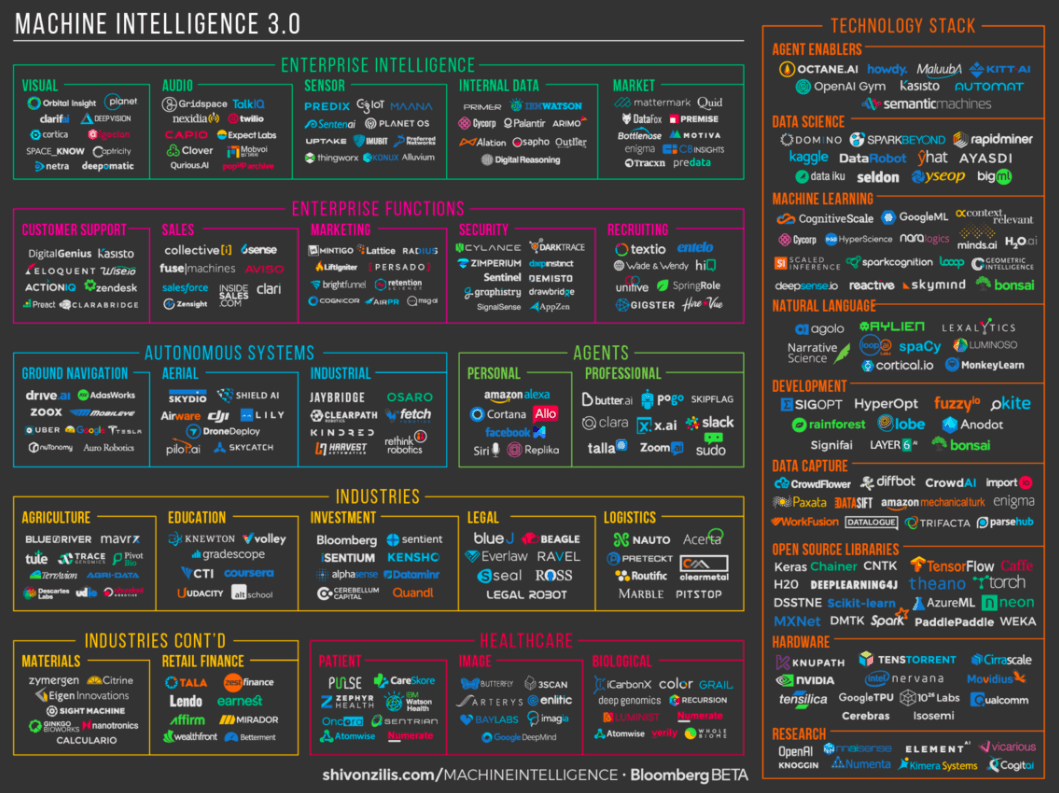Ready or not, the age of the machines has arrived. Whether it’s smart homes, online stores that know what you want before you even log in, or cars that see drivers as a necessary evil, AI-based machines are quickly spreading themselves throughout the landscape of our lives.
And while some see such computerized proliferation as a welcome embrace of everything an efficient, productive future should entail, others liken it more to a plague of locusts. Although the two perspectives couldn’t get more disparate in nature — one camp extolling the Disney-like promise AI holds for humanity while the other is spinning Orwellian cautionary tales — machine learning is here to stay.
For advertisers, the argument between the good and bad, darkness and light, is just as divisive as it is in other industries — perhaps even more so. While it is an inherently creative enterprise, advertising is obviously not immune to the relentless march of innovation. Despite the incredible efficiencies it has already provided advertising teams, there is a palpable, justified pause to many who worry about an automated, machine-led creative director and direction.
At the risk of sounding like a dime store sci-fi novelist, however, only time will tell if the hopeful dreamers or cautious naysayers will ultimately be proven correct about machine-led creative direction within the advertising industry. Still, an extremely valid and convincing case can be made for both sides of the machine-driven coin.
June 5th: The AI Audit in NYC
Join us next week in NYC to engage with top executive leaders, delving into strategies for auditing AI models to ensure fairness, optimal performance, and ethical compliance across diverse organizations. Secure your attendance for this exclusive invite-only event.
The case for a utopian, machine-led future
Reality isn’t Blade Runner. Humanity has yet to battle for its existence against an AI-fueled army of bots. In other words, while things might get a bit dicey for mankind in One Million A.D., our lifetimes will see unparalleled innovation and productivity because of AI and the extraordinary abilities it provides us. For advertisers, machine-based creative leadership is simply an extension of the path many are already on.
Ultimately, an advertising campaign is meant to maximize exposure of a brand and product to generate the highest conversion rates possible. While it’s not exclusively an ROI-steered process, ROI is obviously an extremely important component to the advertising industry.
Computing power, storage, and trend analysis through algorithms are already pushing the boundaries of what human beings are capable of creating on our own. Such algorithmic marvels can mine consumer data, create accurate and timely models, and provide tremendous insight into the strategy and design of a campaign. In fact, AI-directed campaigns have already been conducted with significant results.
Given the nearly countless possible combinations of tone, assets, and timing within any given campaign, machine-directed advertising is most capable of deciphering the ideal mixture to best serve the overall message. However, the simple fact that a computer would be directing the advertising doesn’t mean human beings will ultimately become useless nuisances riding on the machine’s back. In reality, a machine serving as creative director would steer the ship through the often intimidating, muddled waters of consumer behavior for the advertising team to distribute the most efficient, effective, and productive message to the consumer base. To a large extent, advertising is already a data-driven enterprise. Computer-led creative directorship is merely an extension of an existing trend.
The case for keeping AI out of the director’s chair
Advertising is rooted in creativity. While the ultimate goal is to maximize ROI and conversion rates, it will always be a mix of art and science. Although computers are obviously wonderful at the science side of the equation, turning raw data into incredibly insightful and useful tools to help advertisers find the best route to an audience, the artistic capabilities of a human being cannot be replicated.
As self-serving as it might sound, we are nuanced, endlessly complex and often unpredictable products of nature, environment, and personal histories. Our individuality breeds creative explosions that can alter the way life is seen and led on our planet. As a matter of fact, the most creative people are unable to explain exactly what inspires those bursts of vivid, colorful, and perception-altering imagination that fuel art and design.
If an artist or designer is unable to explain the source of their creativity, it’s likely to be a unique perspective without past similarities. Since AI-based advertising is founded on the premise of mining past and current consumer behavior to predict future tastes, a machine will never be able to produce a truly new, artistic vision because it lacks precedence.
Of course, a creative director does more than just guide a creative vision. A well-rounded, involved director is also a manager, responsible for the talent within a team, working with clients, and maintaining a sense of direction and purpose throughout a campaign. To borrow a previous analogy, a creative director doesn’t just steer the ship through murky water. It commands the crew along the way to make sure the vessel not only reaches its destination but does so in an efficient, productive manner. These skills cannot be simulated and extrapolated through an algorithm, but can only be obtained through managerial experience, charisma, and people skills.
AI has a valued, inevitable place in advertising. It provides humans the capacity to create, hone, and guide a message to an audience in a way that was previously impossible. However, like many new technologies, its exact place within the industry has yet to be definitively defined.
While a machine-based creative director is an enticing proposition to some, it’s a harbinger of misguided efforts for others. Despite a successful first step into the AI-directed pool, advertisers have yet to see if the technology can fulfill the varied responsibilities of a true creative director.
Perhaps the question isn’t whether machines can take over creative direction, but rather if machines and humans can collaborate synergistically to further advertising’s evolution with machine-enhanced creativity.
This article appeared originally at Refuel4.
Alexis Ng is a digital and content marketer at Refuel4, an AI-driven creative platform.



